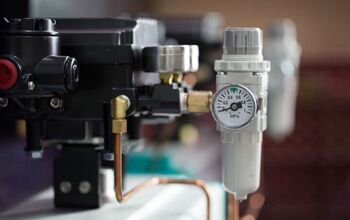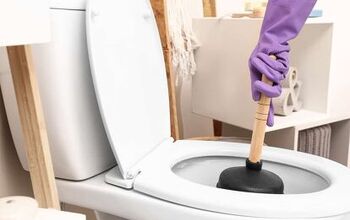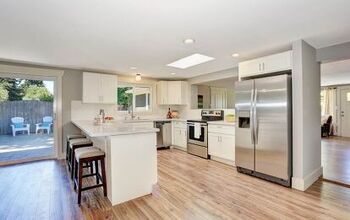How Much Does Sill Plate Replacement Cost?

Among all the components that make up your home’s structural framing, the sill plate is arguably the most important. Its main purpose is to essentially anchor your home to the foundation. Whether the sill plate is rotten or you’ve noticed that your floor is sloping toward an outside wall, the sill plate as a whole is faulty. This component is located right on top of your concrete foundation and if compromised, it should be replaced as soon as possible.
The average sill plate replacement cost is $20,000, and homeowners spend $97 per linear foot. You may have to spend another $15 per square foot for sill plate repairs and $40 per foot on sister rim joists or band boards. It costs another $100 per column to replace or repair shims.
The replacement involves jacks being installed to temporarily lift the floor joists to get to the sill plate. Then, the damaged sill plate has to be removed and replaced. As such, it’s easy to understand why the ease of access and extent of damage to the sill plate has a major impact on costs.
With that said, let’s take a deeper look at sill plates as a whole, what the installation and replacement process is like, how much repairs cost, and some additional floor repair pricing. That way, you can appropriately budget for this major home overhaul.
Do You Need Handyman Services?
Get free, zero-commitment quotes from pro contractors near you.

What is a Sill Plate?
Again, the sill plate is one of the most – if not the most – important element of your house’s structural framing. It is basically a piece of wood lumber, usually a 2 x 6 or bigger, that is positioned flat on top of your masonry foundation wall. These sill plates run along your entire foundation and are what the frame of your first floor is built on top of and anchored to.
As the first piece of wood in the entire house construction, the sill plate is primarily responsible for anchoring the house to the foundation. It is visible from the inside of your home by looking at the top of your masonry walls in either your basement or crawlspace. When viewed from the outside, you’ll see that the sill plates are covered by both the wall sheathing and the siding of your house.
In most cases, sill plates are made from pressure-treated wood, as the material protects from moisture from contact to the foundation or from outdoor exposure. This wood also naturally repels insects, which shields the sill plates from termites and other wood-boring pests. The chemicals in pressure-treated wood are corrosive to some metals, meaning that, to prevent corrosion, the fasteners and framing anchors that are used to secure the sill plate must be rated for pressure-treated wood.
Sill Plate Installation
During a new home build, heavy-duty steel anchor bolts, known as J-bolts, are set into the wet concrete at the top of the foundation wall. The bend at the base of the J-bolts helps to keep them locked into the foundation after the concrete cures. Whereas, the top of the bolts having threading and extent out several inches from the foundation wall.
Once the foundation has cured, the wood sill plates are placed on top of the foundation walls and secured by drilling a hole through the plate at each bolt location. That way, each sill plate rests flush against the top of the concrete. The sill plates are then anchored to the foundation using washers and nuts that are threaded onto the J-bolts.
It was very common in older homes for the sill plate to sit right on top of the concrete. In newer constructions, there is typically some type of gasket material between the concrete and the sill to further protect against moisture and rot.
Sill Plate Replacement
Sill plate replacement is commonly overlooked by homeowners. In most cases, the sill plate necessitates repair when it is made out of untreated wood and rots from moisture or experiences an infestation of termites. Since the sill plate is responsible for keeping your floor joists level, homeowners will often notice sagging floors when there’s a problem with the sill plate.
However, only a true professional is going to know the difference between a rotten sill plate and a sinking foundation. The latter of which is much more difficult and expensive to repair. Regardless, the entire structure of your home depends on your sill plates and, when they’re damaged, they must be replaced in order to ensure the structural integrity of your house.
Find out how to replace an interior window sill.
Sill Plate Replacement Cost
If you’ve noticed that your floor is sloping toward an outside wall, but your foundation is in the same position, this is a strong indication that your sill plate is faulty and needs to be replaced. The cost to repair a sill plate, which involves a total replacement of the component, costs between $95 and $100 a linear foot.
Although you could pay anywhere from $10,000 to $30,000, or more, depending on the level of damage to the sill plate, the size of your home, and how easy it is for your contractor to get the jacks in and replace the wood timbers.
How to Replace Sill Plate
Fortunately replacing the sill plate on your home is not as daunting of an undertaking as many homeowners assume. While it’s always recommended to enlist the help of a professional, with some patience and a lot of preparation, the average homeowner should be able to handle the task themselves over a long weekend. Here’s a quick breakdown of how to replace your home’s sill plate:
- Gather the necessary materials and tools, and excavate to the undisturbed dirt near your house’s foundation. Avoid digging underneath your foundation to prevent cracking the foundation wall.
- Since you’ll be positioning four jacks, you need a total of 16 holes under the house. To provide a solid foundation for the lift, the jacks should be placed at least 24 inches from the sill plate on a floor joist.
- Place a piece of 24-inch square laminated lumber on the ground, followed by a block, the jack, a piece of 4 by 4 lumber, and a steel plate. The laminated lumber will distribute the load of the jack, while the 4 by 4 piece offers a solid base for the floor joist to rest on and the steel plate spreads the load across a larger area. This same setup will be used for each jack on all four walls.
- Once the jacks are positioned, slowly lift the house. Adjust accordingly to keep the house level and ensure that each jack is bearing the same weight. Take your time lifting the house about 8 to 10 inches above the foundation.
- Remove the old, rotten, or damaged sill plate and replace it with a new one. You’ll want to use two solid pieces of lumber put together to run the entire length of the foundation wall. In most cases, two 22-foot-long pieces of 8-inch lumber, connected via a 24-inch lap joint and lag screws, is the best option.
- Cut the sill plate to length and fasten it between the house and the foundation wall.
- Finally, once the sill plate is secured, slowly and carefully lower the house back into position. Finish off by replacing any siding that was removed and remove the jacks.
Signs of a Rotten Sill Plate
Unless your sill plate is visible from your crawlspace or basement, a rotten sill is usually a hidden issue that isn’t noticed until the problem gets worse or you’re working on a different home renovation project. However, there are some telltale signs of a rotten sill plate – such as buckling or cracking of your exterior siding, a noticeable dip in one of your rooms, or your flooring being spongy to walk on.
Do You Need Handyman Services?
Get free, zero-commitment quotes from pro contractors near you.

Additional Floor Repairs
While this may be stating the obvious, the structural wood framing in your home is all connected. This means that when one component is at fault, others are usually compromised. When you have a rotten sill plate, you may also have problems with multiple parts of your flooring system as well. With that said, here are some other repairs and replacements that may need to be performed, which will add to the overall cost of your sill plate replacement:
1. Floor Joist Repairs
When your flooring dips, slopes, or drops, this usually indicates failing joists. Since the joists sit atop the sill plate, water damage will usually spread from the sill plate to the joist. Notched joists are also another common problem, especially in older homes, that involves notches being cut out of the joists to make room for the new pipes and ductwork of an updated HVAC or plumbing system. These notches can weaken the joists and result in them splitting, cracking, or failing.
To repair sagging floor joists, they must be sistered because removing the joists completely will damage the subfloor. To sister a joist, a new board is run parallel and attached to the compromised one, transferring the load. Sistering floor joists usually costs between $11 and $12 a foot.
2. Rim Joist or Band Board Repairs
Rim joists, also known as band boards or band joists, are the wooden piece that sits atop the sill plate. Its purpose is to protect the ends of the floor joists, while also providing support for the exterior walls of your home. Similar to the sill plate, the rim joists can be directly exposed to the outside elements which increase the odds of them getting damaged by humidity.
Like the floor joists, the best way to repair rim joists is using the sistering method. The cost to sister rim joists, or band boards, is between $38 and $42 a foot.
3. Center Beam Repairs
Floors sagging towards the center of the home is a common complaint among homeowners. This usually indicates that a center beam has failed. In some cases, there are shims that have become compressed and will need to be replaced. The cost to install or replace shims is about $100 a column.
However, if any of the support columns under the center beam have failed and also need replacing, adjustable steel jacks will be installed. The cost of additional steel jack installation is between $175 and $200. Whereas, if the center beam itself has split, cracked, or failed completely, the best course of action is to replace it with a steel beam. Beam replacement costs between $240 and $260 a foot, depending on the number of additional supports required (if any are needed).
4. Support Column Repairs
If flooring sags in one specific spot, this may be caused by notched joists or beams. In this case, either sister joists or sections of steel beam can be installed to correct the problem. Additionally, it’s very common for sagging floors in a specific area to be caused by a damaged support column. If a concrete or wood support has failed or weakened, it can be replaced by one (or more) steel jack. The cost to install steel jacks is between $500 and $550.
Related Articles

Jessica considers herself a home improvement and design enthusiast. She grew up surrounded by constant home improvement projects and owes most of what she knows to helping her dad renovate her childhood home. Being a Los Angeles resident, Jessica spends a lot of her time looking for her next DIY project and sharing her love for home design.
More by Jessica Stone



















![12 Washing Machine Brands to Avoid [with Recall Data]](https://cdn-fastly.upgradedhome.com/media/2023/07/31/9075781/12-washing-machine-brands-to-avoid-with-recall-data.jpg?size=350x220)






